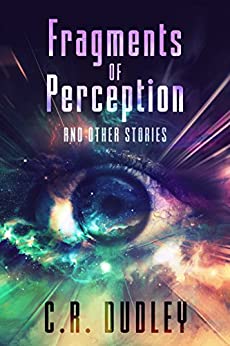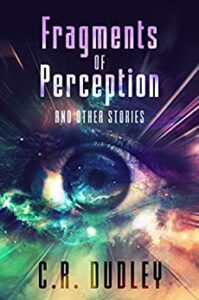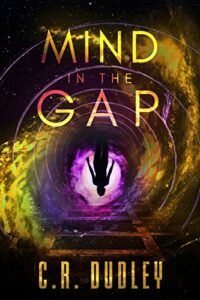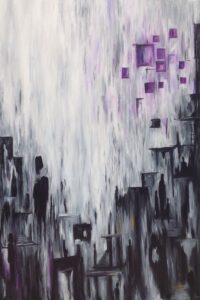
JANE BURN – POETRY AS HARD GRAFT, INSPIRATION, REACTION OR EXPERIMENT?
I interviewed poet & artist Jane Burn who won the Michael Marks Environmental Poet of the Year 2023-24 with A Thousand Miles from the Sea.


In this interview with CR Dudley she talks about her independent press Orchid’s Lantern, which specialises in crossovers between the arts and “… a range of short fiction, articles and reviews of the unusual.” CR Dudley also talks about Thelema, Jung, and her creative methods as a writer and artist.
Leslie: Can you describe how ‘the unusual’ reveals itself in your different literary and artistic projects? What was the life process from childhood onwards that led to you choosing this creative genre?
CR Dudley: Maybe it’s just a rebellious streak in me, but I do think it’s the unusual that teaches us most in life. I’ve never been happy in a box, living the same reality day in day out. I prefer to focus on the things that don’t fit, like little glimmers on the periphery of vision, to keep me on my toes. Since childhood I’ve been intrigued by big philosophical questions, things that nobody knows the answers to, outlier situations and anything that was under-appreciated due to being underground. I’m attracted to little revelations that shake us up and force us to re-evaluate our assumptions… We have to get beyond the everyday to really explore ourselves.
So in all of my writing and painting projects, I’m looking for things I don’t immediately understand, or taking things I do understand and putting them into new environments to see how context affects meaning. This often comes in the form of identifying subconscious responses to events, which I record through automatic writing and painting, taking ego and the thinking mind out of the equation for a while to see what comes to light. I use active imagination and dreaming to dive into the unconsciousness mind and bring back fragments that surface to explore in a creative setting. I seek out associations that sit under the surface, trying somehow to break into new space. I present the insights gained through such processes as raw art or use them as starting points for longer literary works.


In terms of the work I have published: there are many areas that are well-trodden and safe in the arts, so I like to share things that are out of vogue or different from the mainstream in some way. In literature, it strangely feels like going against the grain to even write about the private self these days, when so much popular media is about the outward-facing personality, the community, the social. There’s push-back against navel-gazing, spirituality, introspection, internal focus. So one of the things I have tried to do with the sci-fi genre thus far, instead of looking at only the large-scale implications of advancing technology, I’ve put myself inside the heads of individuals using devices or drugs that alter their thought processes, I’ve captured the moments characters witness something that makes them stop in their tracks, and I’ve tried to find different points of view to tell stories from that aren’t often considered: androids, guardian angels, and aspects of self we keep hidden. My next release will focus even more on the process of psychological change in unusual circumstances.
Leslie: Why did you call your independent press Orchid’s Lantern? What lies behind the title, please?
CR Dudley: Orchid was an old nickname of mine, which came from Neil Gaiman’s Black Orchid comic. In my late teens I was fascinated by Dave McKean‘s artwork – the rich colour, the hyper-realism, the collaging of photographs with painting and the layered approach. Then the subject of the comics themselves – a female superhero – part plant – sorting through strange memories to find out who she is. She’s a master of disguise and of hiding vulnerability. It all came together to inspire me. The cover from the 1993 issue 1 comic was framed on the wall of the space my friends and I used to write and make music, and somewhere along the line Orchid became the name I’d create under. Although no one calls me that anymore, I find strength in remembering those times which were full of unbridled creativity.
The lantern is symbolic of seeking, of shedding light and creating shadows. I love the aesthetics of old-style lanterns, like the one carried by The Hermit in the tarot to guide his way.
The purpose of my blog, which has now become a micro-press, was to explore the hidden through fiction, painting and poetry, so combining those two motifs seemed appropriate. I like to think the strangeness of the name somehow reflects the content.
Leslie: You say you’re a ‘Thelemite’. Can you explain what that involves and how it entered your life, please?
CR Dudley: Thelema is a philosophy originally developed by Aleister Crowley in the early 1900s, stemming from the Hermetic Order of The Golden Dawn, Kabbalah and various eastern disciplines. It’s centred around the idea of Will, and specifically of an individual finding their True Will by identifying and removing layers of false assumption accumulated through life. It’s a very inclusive philosophy that encourages individuality.
One of the key aspects of Thelema is contacting what is known as the Holy Guardian Angel, which is either a personal spirit or a hidden aspect of the seeker’s psychology, depending on their perspective. This is done through ritual and meditation, alone or as a group, repeated and built upon over time. The HGA acts as a guide to go deeper and deeper into the mysteries of the self and world.
I discovered Thelema through library books, again in my late teens. My rough path of interest was astrology to tarot to mystical Kabbalah to Crowley. I’ve always been reluctant to take a label from any spiritual, religious or philosophical school because of the rigidity of outlook that implies, but in Thelema I have found enough nuance – enough room for personal interpretation – that it seems to fit. The practices I mentioned above are inseparable from my creative work – everything I produce is linked in some way by personal myth.

Leslie: When working creatively, what methods do you use to keep what you’re doing fresh and alive? What are your quirks/habits/routines while working?
Caroline: I think I keep things fresh by taking time out to refill the ‘creative well’. I accept there will be periods where I’ll only consume works by other people and make notes on observations. Much of what I create comes from inside, so it’s important to me to reconnect to the outer world now and then to bring in fresh impressions, and not force creativity when I’m burnt out. I’ll usually find that somewhere in the notes, most often the ones I make about visual art, there are new stories emerging all by themselves.
I write in fragments. Even my longer works start out as collections of scraps, which I re-order and stitch together as I go along to create a patchwork. I’ve tried different methods – working linearly, plotting meticulously, working on only one thing at a time – but ultimately they only stifle me. I have to work across genres, across projects, across media. I need multiple dimensions or I get bored!
I tend to work well in hour-long bursts. I can put myself into a flow state for about that long before I need to shake it out, do something else, let the ideas evolve under the surface while my conscious mind is removed from it. Then, when I go back to it, I’m pleasantly surprised to find new angles and fresh flows.
When I have enough raw material, I bring in what I call my ‘editor mindset’ to look at the work more objectively. That’s when I force myself to reel it in, put some boundaries on the scope so it’s not just sprawling forever. I start to think about ordering, consistency, plot. Or, in the case of painting, composition and highlighting the key motifs.
Leslie: Can you describe how dreams and poetry cross with observation in your daily life?
CR Dudley: For me, poetry crosses a psychological boundary that ordinary creative writing does not. Prose bridges the two, of course, being more lyrical. But poetry feels like the language of the unconscious, of symbolism and dreams, because it is full of raw images open to interpretation. It pulls the thinking mind back a stretch, introduces intuition into the mix. I think that by paying attention to this kind of language, we change our perception from hard rationality and judgement to raw experience. We begin to appreciate different aspects of the things we encounter, we begin to feel closer to them.
Motifs from dreams and poetry that have particularly touched us become part of our internal lexicon. We build upon them all the time, often without noticing. When they’re there, present in the forefront of our minds, it puts a kind magic into our life. We are witness to the inner world connecting with the outer.

Leslie: What are the best examples you’ve come across of work combining different expressive art forms? What’s special/distinctive about them? Why are they special to you?
CR Dudley: The first thing that comes to mind is C G Jung’s Red Book, which is very old now but still a great example of how a work can span various media to become something richer. Jung’s ideas have had a big impact on me – the collective unconscious, the power of dream symbols, the different modes of psychological functioning that later became the Myer-Briggs method. Jung saw psychological truth in old alchemical texts and set about turning mental lead into gold through a process he called Individuation. The Red Book was his personal record of this, spanning many years. It contains dream images of his own, ‘conversations’ with aspects of self etc, and it’s all illustrated with paintings of scenes and symbolic mandalas. A great example of fiction meeting non-fiction meeting poetry meeting visual art. It’s just stunning, probably my favourite book of all.
In general, I think the boundaries between art forms are softer than we believe. JG Ballard always said that the surrealist painters had more of an influence on his writing than any literary figure, and that rings true to me with abstract expressionism. Paintings inspire novels which inspire movies which inspire songs which inspire paintings. A friend and I worked directly with this idea for a little while. A line from a found poem followed us through several paintings, stories, music compositions, back and forth. And another friend, Micah Chaim Thomas, is an inspiration in this regard because he has built a whole world around his Eudaimonia series. There are three novels, three short story collections, a ton of artwork and most recently a tarot deck entirely constructed around the ideas explored in the books which he collaborated on with poet Lynn-Cee Faulk. There are even plans to compose some music around it, I believe. I mention this in particular because it’s something current and real to me. I’ve seen it evolve, and I appreciate the connotations of personal myth. Jamie Curcio is another artist who does this wonderfully.
There’s a lot of talk about ‘brand’ in the writing and artistic communities these days, and it mostly feels artificial. But when someone embodies their creative endeavours, when they become personally entangled with it like this, a brand grows organically. A stamp of uniqueness that you can’t even see yourself. And coming back to your first question, I think that is what is unusual and unique to someone else is often the more ordinary thing in the world to the creator. It is their innermost way of being exposed. Unashamed subjectivity. And, to me, that’s what I find most beautiful of all.
Next week I interview Maria Walker whose stitched work and sculptures tell stories about working class people and the secrets of the human body.
ABOUT LESLIE TATE’S BOOKS:

I interviewed poet & artist Jane Burn who won the Michael Marks Environmental Poet of the Year 2023-24 with A Thousand Miles from the Sea.

I interviewed ex-broadcaster and poet Polly Oliver about oral and visual poetry, her compositional methods, and learning the Welsh language. Polly says, “I absolutely love

I interviewed Jo Howell who says about herself: “I’ve been a professional photographic artist since I left Uni in 2009. I am a cyanotype specialist.


Poet Tracey Rhys, writer of Teaching a Bird to Sing and winner of the Poetry Archive’s video competition reviews Ways To Be Equally Human. Tracey,
| Cookie | Duration | Description |
|---|---|---|
| cookielawinfo-checkbox-analytics | 11 months | This cookie is set by GDPR Cookie Consent plugin. The cookie is used to store the user consent for the cookies in the category "Analytics". |
| cookielawinfo-checkbox-functional | 11 months | The cookie is set by GDPR cookie consent to record the user consent for the cookies in the category "Functional". |
| cookielawinfo-checkbox-necessary | 11 months | This cookie is set by GDPR Cookie Consent plugin. The cookies is used to store the user consent for the cookies in the category "Necessary". |
| cookielawinfo-checkbox-others | 11 months | This cookie is set by GDPR Cookie Consent plugin. The cookie is used to store the user consent for the cookies in the category "Other. |
| cookielawinfo-checkbox-performance | 11 months | This cookie is set by GDPR Cookie Consent plugin. The cookie is used to store the user consent for the cookies in the category "Performance". |
| viewed_cookie_policy | 11 months | The cookie is set by the GDPR Cookie Consent plugin and is used to store whether or not user has consented to the use of cookies. It does not store any personal data. |